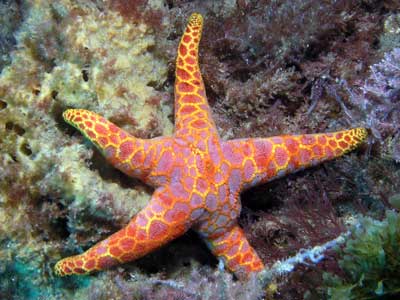|
The Northern Coastline of Tasmania is quite spectacular is spots and there are a number of places that you can dive. The Rocky Cape area, located between Stanley and Wynyard, has sites right around the cape as well as further east near Sisters Beach.
At Rock Cape there are many different dive sites. Most of these are located immediately to the north of Rocky Cape itself. This one, however, is located to the west of the tip of Rocky Cape.
 |
| Rocky Cape Boat Ramp |
To do this spot, you would normally drive out to Rocky Cape National Park and launch your boat at the small boat ramp here. It is really only suitable for smaller boats (say to five metres) and not all that suitable for a boat like my own Marlin Broadbill except perhaps at high tide (tides on the north coast are large, about three metres here). You could also run from Sisters Beach boat ramp or Boat Harbour boat ramp further to the east. It is a short run from the Rocky Cape ramp to the point and then about the same distance to this dive site.
Head around the northern side of Rocky Cape and then in a westerly direction towards Stanley. It is about 2.6 kilometres from the boat ramp to the reef. A good spot to dive is at GPS Reading S40° 50' 37.8" E145° 30' 04.2". This is using WGS84, unlike most of my diving GPS Marks on this web site. If you do not know what this means, read my GPS Page. The site comes up to about 10 metres from over 20 metres.
 |  |
| A very colourful section of North West Rocky Cape | A school of seapike at North West Rocky Cape |
Most diving in Tasmania is not done by anchoring. People seem to either do a live drop or use a small anchor and buoy, dropping divers next to the buoy. The boat then waits for you and picks you up as you surface. I have no idea why this happens, as there does not seem to me to be any advantage overing anchoring like we do in Sydney.
Anyway, once at the above location, either anchor or drop your buoy. When you enter the water and drop to the bottom, you should see some gutters that run east to west. We headed south and then once we got to about 18 metres, headed east into the current that was running (see comment towards the end of the article). The reef turned a little to the north as we went.
 |  |
| A starfish at North West Rocky Cape | Another section of the reef at North West Rocky Cape |
There was a lot of small boulders on the reef and these made homes for a lot of smaller fish. We saw a lot of leatherjacekts, wrasse, seapike and more. There were some nice sponges and small gorgonias as well.
A little way up to the north, there was a gutter than ran into the reef. This was worth examining as well. We turned around here and headed back to the buoy line and finally ascended a bit up the reef before finishing the dive.
This site was not as good as the three other dives I did in the Rocky Cape/Sisters Beach area, but was nice anyway. We had about 20 metre visibility and water temperature of 18.8ÂșC in February 2008.
You could dive this site with the dive shop at Wynyard.
| 
 v6.00.307 © 2003-2005
v6.00.307 © 2003-2005